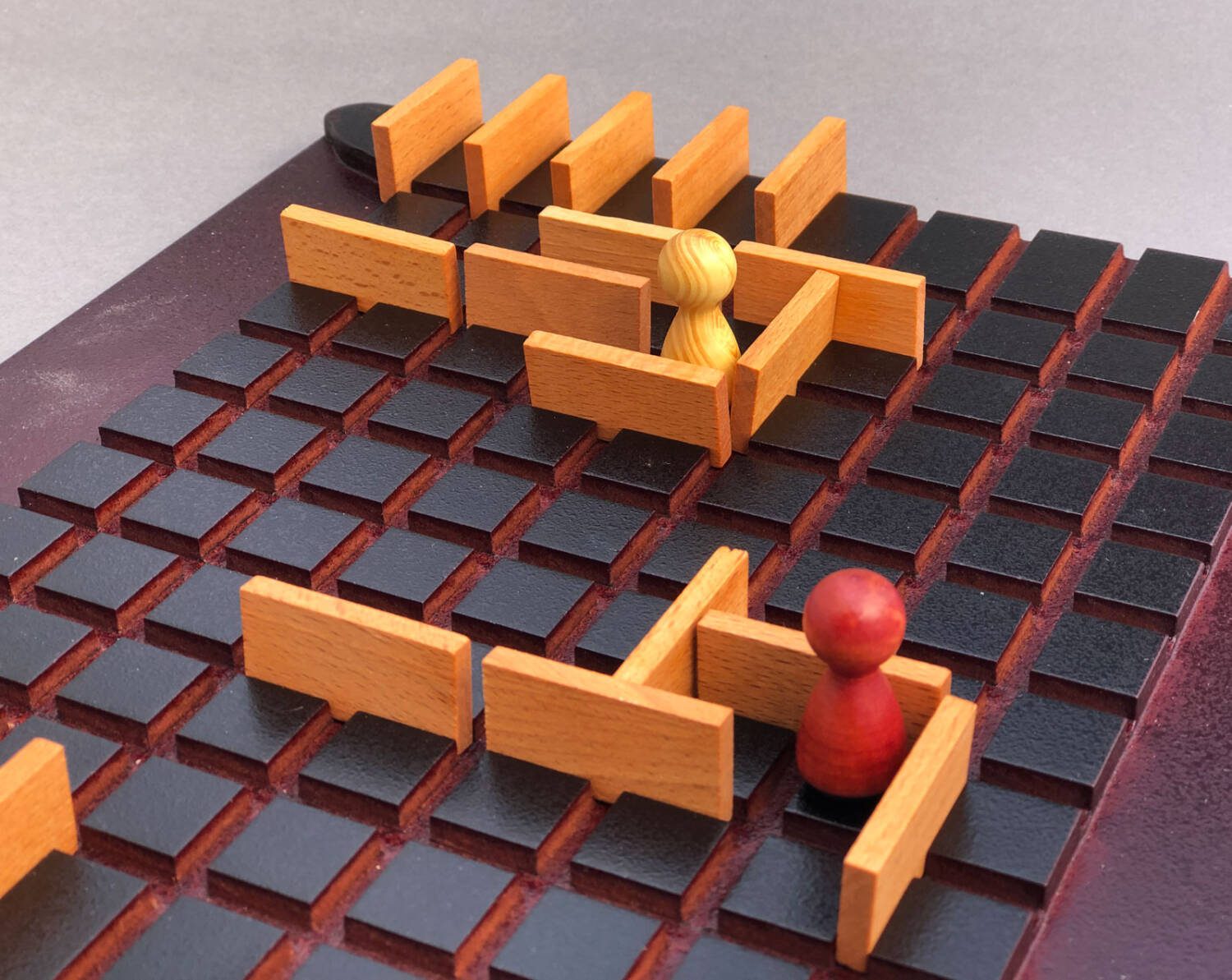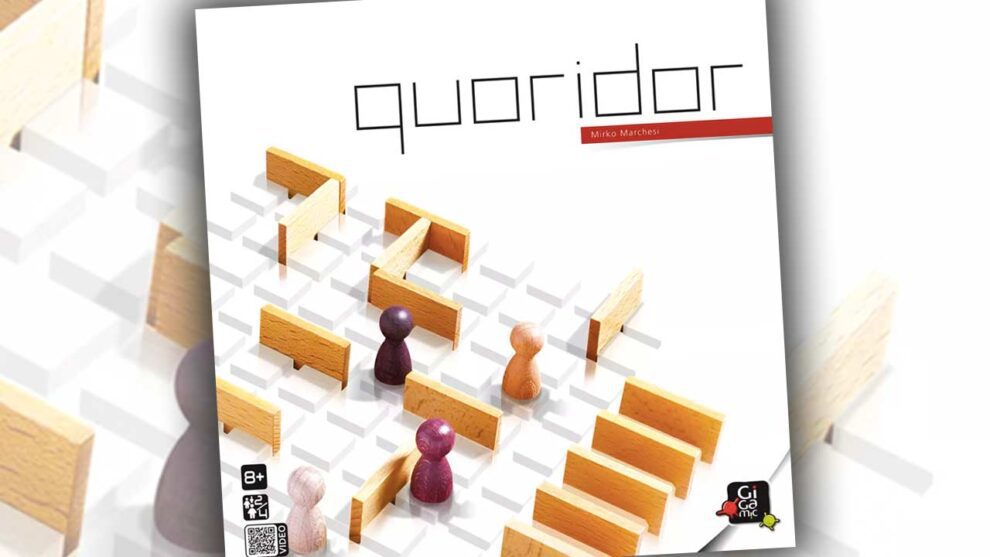Quoridor exemplifies one of my favorite things about a good abstract game: you can teach it without saying a word. In fact, the rule booklet that comes with my Gigamic Games version is two pages long. One of those pages is simply drawings to illustrate the text and are really all you need to understand how the game is played.
While learning Quoridor might be easy, winning can be another thing.
Quoridor is played on a 9×9 grid of 81 raised squares. Surrounding these squares are grooves cut into the wooden board along their edges that isolate each square.
The two players begin by choosing a colored pawn and placing it on the square in the center of the line closest to them. Each player then takes ten of the plain, wooden rectangles that act as fences in the game.

Pawns move orthogonally, that is, forward or backward, right or left, from their starting position. Diagonal moves are not allowed (with one exception, covered later). The winner is the first player to get their pawn to any square on the farthest row—that is, the row closest to your opponent.
A few additional rules need to be mentioned here: as tempting as it might be, you cannot fully block off your back row, nor can you surround your opponent with fences. Each player must always have an available path to victory.
Should two pieces meet head-to-head, the player whose turn it is has a choice: if there is no fence behind the other pawn, the player may move to either side or backwards, or choose to jump over the blocking pawn. If there is a fence behind the blocking pawn, the player can make a diagonal move into any open space not blocked by a fence.
Quoridor would be a simple race game if it weren’t for the fences each player has at their disposal. Fences are placed in the grooves between squares and must always line up with two squares. (Their size would allow them to cover a single square in the center and half of either square to the side, but this is an illegal move.)
Once a player places a fence on the board, the fence remains there until the end of the game.
On your turn, you can either move your pawn or place a fence. It sounds like a simple choice, but do you move your pawn closer to victory, or do you build an obstacle for your opponent to work around? This offensive/defensive move dichotomy is one you’ll wrestle with throughout the game. (Until you run out of fences, at which time you can only move your pawn.)
Single fences can be added to, either horizontally or vertically, to create walls or narrow corridors within a growing labyrinth. However, the maze you’re constructing to block your opponent can unexpectedly become part of the maze your opponent is building against you. I’ve played more than one game of Quoridor where I was halfway across the board only to be fenced off from the side of the board I was racing along. That forced me to backtrack and head for the lone escape route on the other side of the board.

Quoridor also has a four-player option. This involves two additional pawns, each starting from the center square along the base row of the two ‘neutral’ sides in a two-player game. You divide the twenty fences equally amongst the four players, meaning everyone gets five fences instead of ten.
I rarely see abstract games scale well beyond the two-player version. While Quoridor doesn’t do this nearly as well as Ingenious (my personal Gold Standard for this type of scaling), the four-player game requires a slightly different mindset. With two additional players, the board quickly becomes crowded with pawns vying for safe passage. A greater, even more puzzling network of fences is being constructed that you’ll need to avoid, work around, and, of course, add to yourself. While it’s not quite my cup of tea, like the two-player version is, it’s both fun and accessible enough to be used as a gateway game with another couple.
If you like abstracts the way I do, you should give Quoridor a try. It’s a well-designed, fun time of a game.












My daughter loves this game. She has two copies; one was about used to the point of uselessness as she took it to school with her everyday to play with friends at lunch, study hall, etc.
Me? I never could get into the game. Never sparked anything in me.
But you have a wonderful review that has me wondering if I need to revisit this game. Thanks!
Your daughter is a very wise gamer!
You should ask her to play it with you. I’m guessing she’s played often enough to be a challenging opponent.